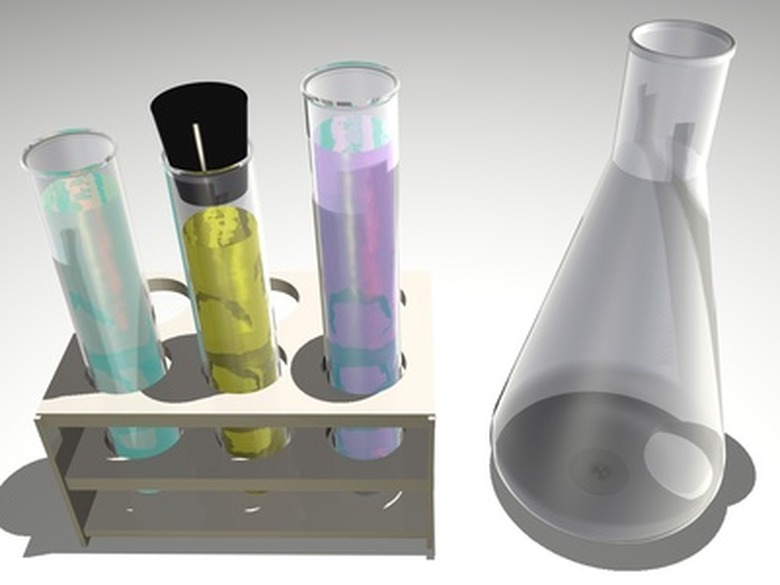Chemical Reactions Between 6M Of HCL & A Piece Of Calcium
When a piece of calcium is placed into a solution of hydrochloric acid, it undergoes two vigorous reactions. However, the reactions that occur when HCl is dissolved in water (H2O) form the basis for understanding the reactions that occur when calcium (Ca) is placed into a diluted solution of aqueous hydrochloric acid [i.e., 6M HCl (aq)].
Initial Dissociation or Acid-Base Reaction
Initial Dissociation or Acid-Base Reaction
It is important to remember that hydrochloric acid is not simply a mixture of HCl and H2O. When HCl is dissolved in water this strong acid completely dissociates. When HCl is added to H2O, the dissociation reaction frees the H+ ion which bonds with H2O to form hydronium ions (H3O+) and leaves free Cl- ions in solution. This reaction eventually reaches an equilibrium, and the increase in H3O+ ions decreases pH, resulting in an acidic solution that can be verified with litmus paper. In diluted solutions such as 6M HCl, water molecules also remain.
Formation of Calcium Hydroxide
Formation of Calcium Hydroxide
When calcium (Ca2+) is added to dilute 6M HCl solution, the Ca2+ reacts with H3O+ ions and water molecules (H2O) vigorously to form calcium hydroxide (CaOH2) and hydrogen gas (H2). This reaction generates heat and results in the release of bubbles of H2 gas. The CaOH2 will appear as a whitish film on the water. The formation of CaOh2 reduces the number of H3O+ ions in the solution and increases the pH of the solution–litmus paper tests verify this change in pH.
Formation of Calcium Chloride
Formation of Calcium Chloride
When Ca is added to 6M HCl solution, the Ca also combines with free Cl- in the solution to form calcium chloride (CaCl2). This acid salt will precipitate to the bottom of the test beaker.
Cite This Article
MLA
Mac, Emmalise. "Chemical Reactions Between 6M Of HCL & A Piece Of Calcium" sciencing.com, https://www.sciencing.com/chemical-6m-hcl-piece-calcium-7354424/. 24 April 2017.
APA
Mac, Emmalise. (2017, April 24). Chemical Reactions Between 6M Of HCL & A Piece Of Calcium. sciencing.com. Retrieved from https://www.sciencing.com/chemical-6m-hcl-piece-calcium-7354424/
Chicago
Mac, Emmalise. Chemical Reactions Between 6M Of HCL & A Piece Of Calcium last modified August 30, 2022. https://www.sciencing.com/chemical-6m-hcl-piece-calcium-7354424/
